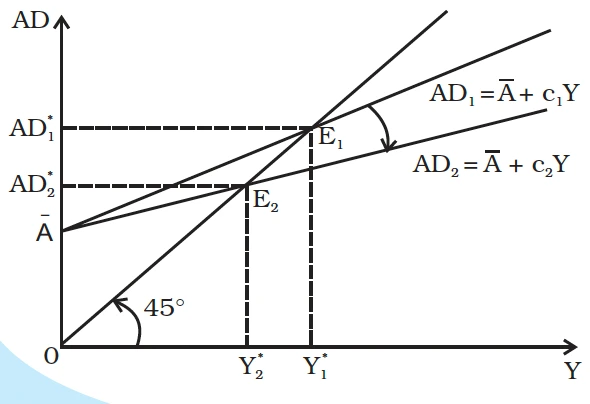![]() 5 Dec 2023
5 Dec 2023
The Paradox of Thrift suggests that when individuals in an economy collectively increase the proportion of their income that they save (i.e., when the marginal propensity to save, or MPS, increases), the total value of savings in the economy may not necessarily increase; it can either decline or remain unchanged(Refer Figure).

Paradox of Thrift – Downward Swing of AD Line
|
POINTS TO PONDER Just like Marginal propensity to Consume(MPC) , Marginal propensity to save tells us the rate of change of saving with unit increase in income. Usually if the expenditure is fixed then extra income goes into savings. However that is not always the case. Can you think of situations when people spend more than save? |
|---|
<div class="new-fform">
</div>
